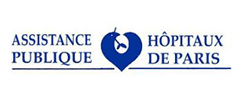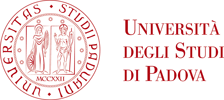
Results at the end of the project
We have identified specific omics profiles for patients with PA, PPGL, and CS, as well as PHT, by investigating thousands of patients with high blood pressure across different European countries and by integrating high throughput genetics, genomics and metabolomics data with phenome annotations through bioinformatics modelling. The validity and cost-effectiveness of using the omics-based protocol for stratifying hypertensive patients has also been evaluated, to open the way to implementation of this approach to clinical practice.
In a first phase of our study, around 500 patients with endocrine and primary hypertension and 100 non-hypertensive controls have been included from already existing patient registries from specialist centres for adrenal disorder across Europe. The researchers then used cutting edge techniques to measure different omics features in blood and urine samples of these patients. ‘Omics’ is a term defining the collective characterisation and quantification of pools of biological molecules. We have then applied artificial intelligence approaches to implement a machine learning pipeline capable of identifying a signature that enables us to distinguish patients with endocrine hypertension and primary hypertension. A patent has been filed to protect those results.
In a second phase, a prospective study recruited more than 2000 patients with various types of hypertension in seven major expert European Hypertension centres, with the aim to use this data to refine the signature and to validate its diagnostic performances. As the identified signature from the retrospective study contains a high number of different molecules to be measured in the patients’ blood and 24h urine, this approach is also aimed to obtain a simpler set of biomarkers to allow the development of the multi-omics signature for a test easily usable in clinical setting.
An important issue for implementing a new test into clinical practice is of course its cost. Therefore, the ENSAT-HT project has also developed an economic model evaluating the costs of the omics tests for the diagnosis of endocrine hypertension compared to the current gold standard diagnostic procedure. A simple model was developed which considered the current costs of hospital-based workup for endocrine hypertension in each country as well as the risk of complications in undiagnosed patients.
In order to validate the approach of omics-based diagnosis of endocrine hypertension, we have designed a protocol for a randomised controlled clinical trial comparing the new omics-based procedure to standard of care. This trial will be the next step after the project for the further development of the identified omics signature to be translatable into a clinical setting.
Regarding the dissemination strategy, we communicated since 2019 on Twitter about the project by raising awareness about high blood pressure among the general public, but also retweeting the relevant posts from our pairs. Before the end of the project, it was essential for us to introduce our consortium through a series of threads and allow people to “meet” virtually the team members who took part in ENSAT-Ht’s development. This last strategy leaves the door open for potential collaborations on the clinical setting of the identified omics signature.

Union’s Horizon 2020
This project has received funding from the European Union’s Horizon 2020 research and innovation programme under grant agreement No 633983
Latest News
-

ENSAT-HT wins award
We are very proud to announce that ENSAT-HT has received the French Award “Etoiles de l’Europe”! This award is organised annually in order to valorise the French coordination of... -
ENS@T-HT partners submitted a new patent application to develop a multi-omics signature and use of identified biomarkers to detect endocrine types of hypertension, different from primary hypertension.
Paris, 17 May 2021 Public statement ENS@T-HT partners submitted a new patent application to develop a multi-omics signature and use of identified biomarkers to detect endocrine types... -

ENSAT-HT ExCom meeting November 2019
The most recent ENSAT-HT Executive Commitee meeting took place on 8th of November 2019 in Rotterdam. -

ENSAT-HT first Results !
ENSAT-HT consortium meeting 2019 First results for biomakers from machine learning have been presented at the ENSAT-HT consortium in Lyon, France on 16th May 2019 by our partner...
Partners













